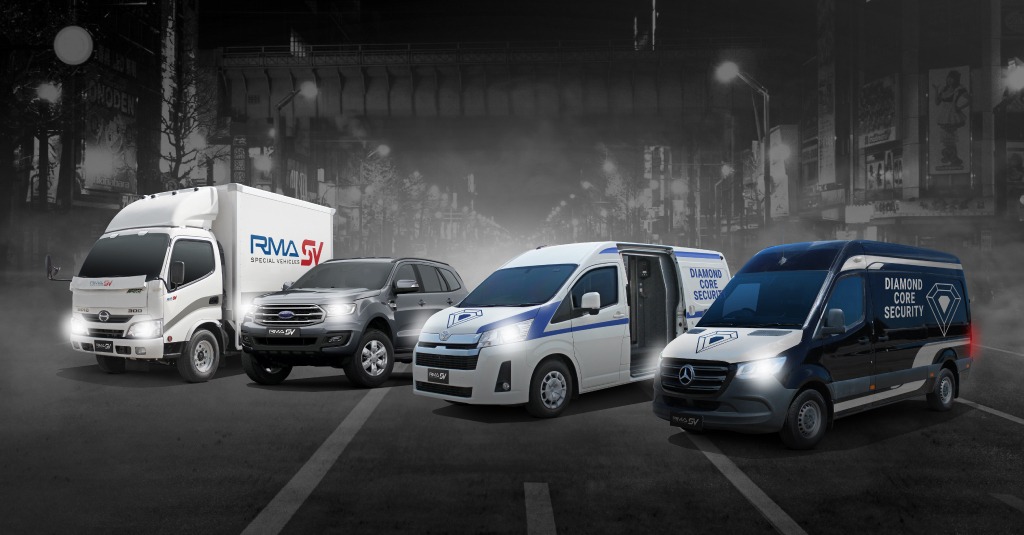RMA SPECIAL VEHICLES CASH-IN-TRANSIT

RMA Special Vehicles has developed a range of Cash-in-Transit Vehicles (also known as CIT Vehicles) for security companies worldwide.
Most of RMA Special Vehicle’s Cash-in-Transit trucks weigh between 2.8 – 3.2 tons, far below the industry average, because they are fitted with composite materials rather than steel. These lightweight vehicles give customers more payload allowing them to transport more goods.
“While the actual Cash-in-Transit trucks can vary in size, their internal components, such as the sensors, doors and locks, remain the same. With the benefit of our free zone location in Thailand, we are able to purchase vehicles from customer’s local markets and fit out these vehicles in our factory,” explains TPSV founder and Managing Director, Mike Tiller.
“When it comes to Cash-in-Transit vehicles, customers all have their own specific internal system of how they run day-to-day operations of that vehicle. For example, they will have different protocols of who can drive the cash-in-transit vehicle when there’s cash in the vault, who can access the vault, who should be guarding the vault and so forth. TPSV engineers adapt each vehicle’s equipment to match a customers’ internal operating system so that clients can enjoy one system across all their fleet vehicles,” adds Mike.
The Mercedes-Benz Sprinter Cash-in-Transit conversion is a great example of a Cash-in-Transit vehicle that has multiple key features such as:
- Low profile CCTV cameras
- Armored sliding door
- Lock controlled by system, interlocked with cab and vault airlock
- Fingerprint scanner in airlock at cab entry door
- CCTV monitor top, 7” HMI touch screen center for system control, LED push buttons for door control
- All door positions sensed with coded infrared two-part sensors
- RFID reader in front windscreen
Find out more about RMA SV Mercedes-Sprinter Cash in Transit (CIT)
–

